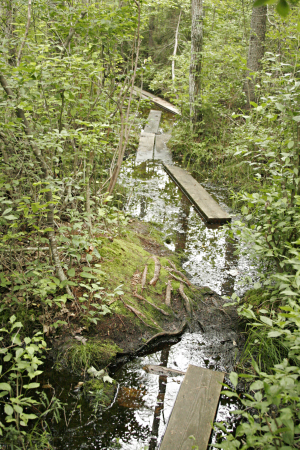 |
| This is pretty much what the path looked like |
This bog is basically a really thick layer of moss on top of a lake, so everything is pretty much saturated with water. There is a mile or two of paths through the bog, paved with planks of wood. Visitors are warned in no uncertain terms to stay on the path, since the thickness of the bog varies. The path was rather waterlogged the day I went and the boards were sometimes under water and I figured that I would try the edge of the path. However, you won’t put much of your weight on the bog itself before you discover that however wet the path might be, it will be drier than trying to walk on the bog (assuming that you don’t sink through it). Water oozes out of the moss with just a little weight applied.
Truth be told, the scenery is kind of boring. It looks pretty much like a regular forest except that the trees are a lot shorter, due to the lack of nutrients, there is moss everywhere, and the soil is saturated with water. Oh, and if you wander off the path you might fall through and die—nothing like a little danger to add a bit of excitement! The beauty of the bog is really in looking for the interesting small things, something which I found hunting for pictures encouraged. Look for interesting fungi, examine the moss in detail, see what’s in the water. This particular bog has a box of explanatory sheets of papers at the trail head that have explanations of various parts of the bog, which is also interesting.
I saw a couple white orchids, but the best part of the bog were the pitcher plants. Pitcher plants are a fairly passive carnivorous plant which has hairs on which insects slip into a container filled with rainwater and are slowly digested and absorbed by the plant. Plants are not normally very offensive, so I find carnivorous plants to be intruiging. Carnivorous plants grow only where soil conditions are poor enough that they need extra nutrients that the soil cannot provide; since the bog is very poor in nutrients (since it’s floating on a lake), the bog is a prime place for carnivorous plants.
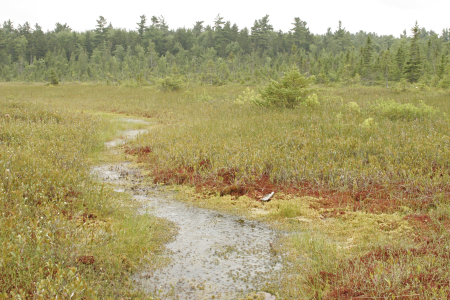 |
| The open part of the bog. It is too young for trees here, yet. |
I could have taken better quality pictures if I had a tripod and more than two minutes to compose the shots, but I’m thrilled at seeing some really gorgeous specimens. I was not really expecting an answer to a only half-serious prayer, but this is one of the most exciting answers I’ve had. These were some superbly crafted pitcher plants. If you have a chance to visit a bog, look around for the meat-eating plants!
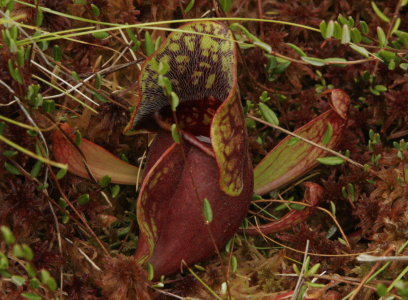 |
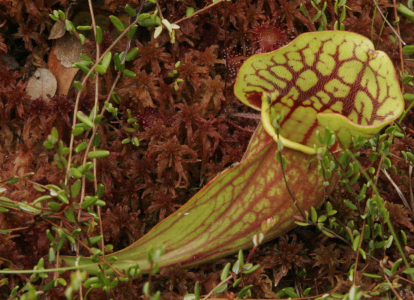 |
| This
is the fat, red type of pitcher
plant; my favorite. This one seems to have some friends. |
The mead-horn variety is also pretty spectacular. |
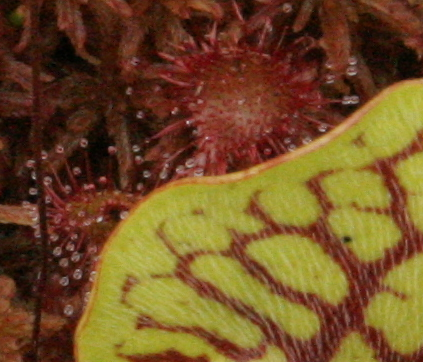 |
| The alleged sundew plant |
1 The Norse gods were apparently fond of mead, which is honey wine. They drank it in horns, which look kind of similar to the pitcher plant on the right.